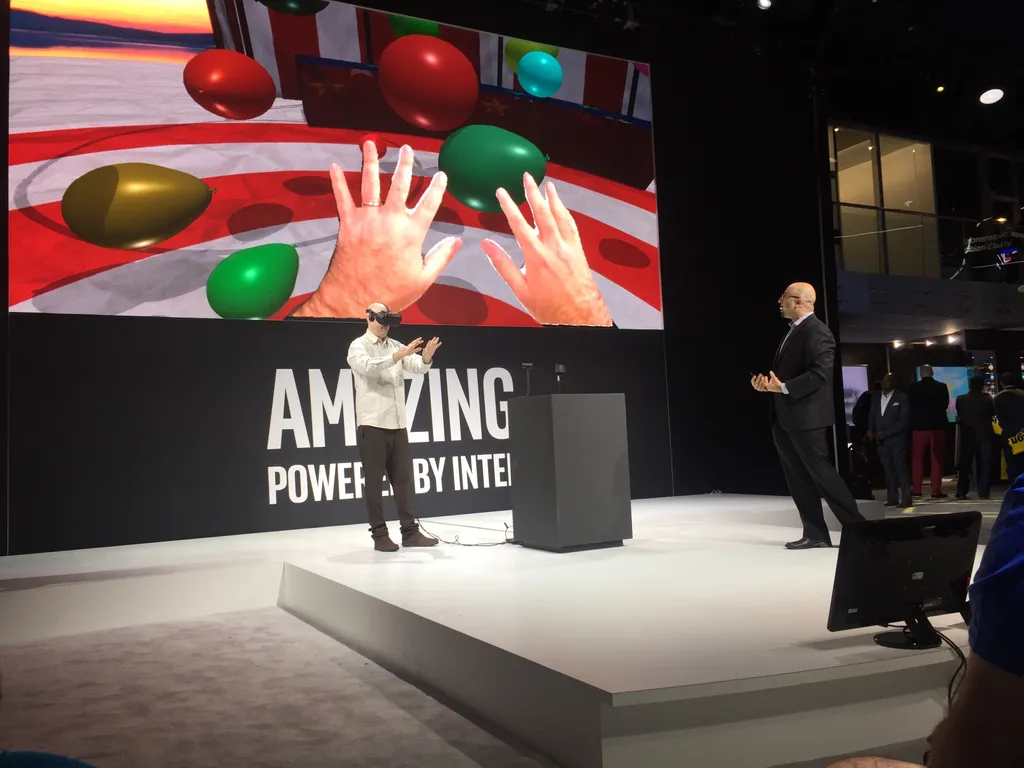The bleachers at Intel’s CES sprawling booth at the Las Vegas Convention Center were packed to the gills with eager technophiles waiting to see something incredible on Thursday afternoon. As it turns out, they’re rewarded for their loyal presence when Aneet Chopra from Intel takes the stage and begins to explain the concept of “Merged Reality.”
To begin his remarks, Chopra plays the following video:
That video is four months old and primarily serves to position Project Alloy: Intel’s first attempt to design its own, self-contained virtual reality headset. During this presentation however, Chopra would not be focusing on Alloy at all. In fact, his main demonstration would use an Oculus Rift, retrofitted with Intel’s RealSense Camera.
Chopra invites an eager Intel colleague onto the stage and invites him to don the jerry-rigged helmet. The man obliges and soon the large screen behind him is filled with balloons. Now, I like balloons just as much as the next guy, but what appeared on screen next was perhaps even more impressive.
Chopra asked his colleague to show his hands and soon they appeared on screen surrounding the balloons. These were not an approximate version of this man’s mitts created by some sort of VR controller or projected onto a digitally created avatar. No, these were his actual, real world hands — complete with wedding ring. That in and of itself is enough to raise an eyebrow or two but Chopra and co. then took it a step further.
Chopra’s assistant began to move his hands towards the virtual balloons he was seeing in the headset and he was able to bat the balloons away with what appeared to be a very narrow degree of tracking precision. The plot again thickened when this man began manipulating the balloons with his fingers as well.
Not only were his real hands inside VR with him, but they were being tracked down to the individual digits.
This avatar and controller free hand tracking experience is vital to what Chopra called the “pillars of Merged Reality.”
These are: an untethered (wireless) headset, freedom of movement, integrated tracking (inside-out), and natural manipulation. The latter pillar is what Chopra and his cohort were demonstrating on stage. According to Chopra, Alloy will be the first headset to incorporate this type of technology natively and begin ushering in the age of Merged Reality.
We came away with a mixed reaction from our actual hands-on demo of the Project Alloy using Intel’s RealSense Camera at CES, but it remains to be seen how this technology will be implemented in the industry as a whole.




























